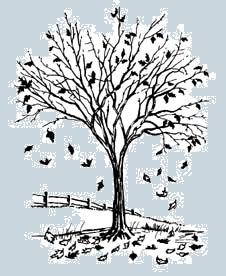
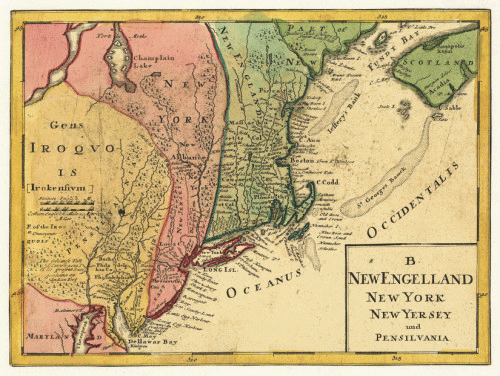
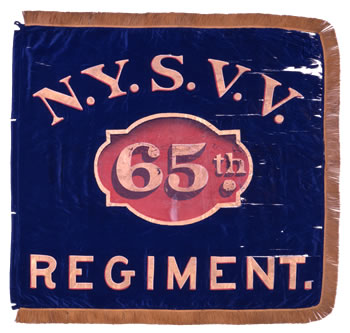
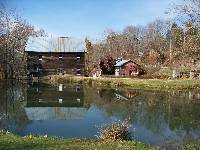
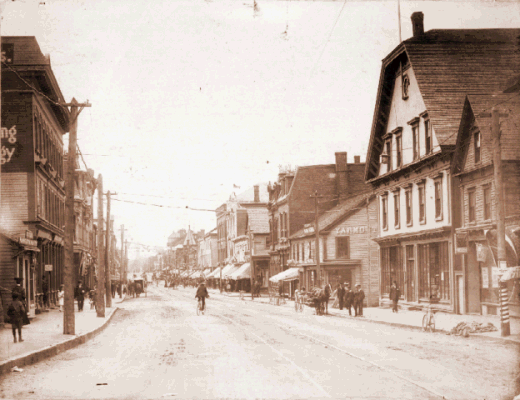
 |
 |
 |
 |
 |
Golden |
||||
| In the fear of the LORD is strong confidence:and his children shall have a place of refuge. [Proverbs 14:26] | ||||
Home |
Harris |
Pearse |
Pepperell |
Rightmeyer |
Shellabear |
Ancestors of Mabel Pearse Golden |
Generation 1 |
1. |
Mabel Pearse Golden.Mabel was the daughter of Cyrus White Golden and Elizabeth Shellabear Pearse. She was born 13 Dec 1881 in New York City. She died 14 Jul 1966 in North Beverly, Essex, Massachusetts. |
||
Ray Douglas Harris.Ray was the son of Judson Irving Harris and Annie Worthline Harris. He was born 08 May 1883 in Yarmouth, Nova Scotia. He died 23 Sep 1918 in Beverly, Essex, Massachusetts. Mabel and Ray were married 27 Oct 1904 and had five children: |
i. |
Stuart Pepperell Harris, b. 28 Oct 1905; m. Mary Florence Russell 15 Jan 1927; d. 21 Apr 1989. |
||
ii. |
Ruth Golden Harris, b. 01 Aug 1907; m. Henry Magnuson 27 Aug 1927; d. 16 Oct 2003. |
||
iii. |
Elizabeth Pearse Harris; b. 13 Jul 1910; m. John [Jack] Dow; d. 10 Apr 1980. |
||
iv. |
Edith Killam Harris; b. 10 Oct 1913; m. Allen Underwood 03 Oct 1936. |
||
v. |
David Ray Harris; b. 21 Oct 1916; m. Elinor Royce King 29 May 1941; d. 01 May 2003. |
Generation 2 |
2. |
Cyrus White Golden.Cyrus was the son of Henry Newton Golden and Mary C [Rightmeyer]. He was born 01 Apr 1844 in South Hadley, Massachusetts. Cyrus enlisted as a private in the 65 The following is taken from the 65th New York Regimental History: Source: The Union Army, Vol. 2, p. 98. |
||
3. |
Elizabeth Shellabear Pearse.Elizabeth was the daughter of William Pearse and Sarah Jane Pepperell. She was born 18 Feb 1842 in Dartmouth, Devon, England. She died 21 Nov 1911 in Cambridge, Massachusetts. Cyrus and Elizabeth were married 11 Oct 1864 in New York City and had seven children: |
i. |
Wilson Nimmo Golden; b. 04 Mar 1867. |
||
ii. |
Charles C Golden; b. 04 Mar 1867; d. 22 Dec 1885. |
||
iii. |
George W Golden; b. 20 Nov 1869. |
||
iv. |
Margaret Windsor Golden; b. 27 Jul 1871. |
||
v. |
Lydia A Golden; b. 17 May 1873. |
||
vi. |
William H P Golden; b. 1878. |
||
+1. |
vii. |
Mabel Pearse Golden; b. 13 Dec 1881; m. Ray Douglas Harris 27 Oct 1904; d. 14 Jul 1966. |
Generation 3 |
4. |
Henry Newton Golden.Henry may have been the son of Enoch Golden and Elizabeth Ball. According to the 1850 Census, he was born between 1809-1811 in New Jersey. He died 25 Jun 1885 in New York City, New York. The Golden ancestors that follow are real people who actually lived during the settlement of New York and New Jersey; however, their relationship to Henry Newton Golden has not been established. Enoch Golden did however, in fact, have a son named Henry born about the same time as our Henry Newton Golden. Whether Henry and Henry Newton are the same person remains to be seen. Further research on this family is needed to prove or refute the connection. The information is provided here only as a means of cataloging this family for further research, not to claim a relationship to the Golden family that settled in Gravesend, New York. It should not be used by anyone as fact without further substantiation. All of the descendants of Henry Newton Golden named here are factual. |
||
5. |
Mary C [Rightmeyer].The parents of Mary C are unknown at this time. According to Those Who Have Gone Before Us, a memoir by Warren Carberg, her surname was Rightmeyer. I have not been able to substantiate this claim and include the Rightmeyer surname here as a research tool only. The 1850 Census states that she was born in New York which is consistent with the Rightmeyer family history. The Carberg paper is very interesting reading and presents a very personal look at the Golden family that I am proud to say I am a part of. Henry and Mary were married before 1833 and had five children: |
i. |
Elizabeth Golden; b. Aug 1833. |
||
ii. |
Henry Golden; b. 04 Nov 1837; served in the U.S. Army during the Civil War; d. 17 Oct 1862 at Harpers Ferry, West Virginia. |
||
iii. |
Mary Golden; b. 19 Feb 1839; d. 22 Dec 1912. |
||
iv. |
Reuben Franklin Golden; b. 08 May 1842; served in the U.S. Army during the Civil War; m. Althea Chesebro 18 Oct 1863; d. 22 Dec 1912. |
||
+2. |
v. |
Cyrus White Golden; b. 01 Apr 1844; m. Elizabeth Shellabear Pearse 11 Oct 1864; d. 17 Nov 1882. |
6. |
William Pearse.William was the son of William Pearse and Jane Shelabear. He was born 1815 in South Bent, Devon, England. He died 06 Sep 1849 in Belwood, Ontario, Canada. |
||
7. |
Sarah Jane Pepperell.Sarah was born in 1820 in Dartmouth, Devon, England. She died 27 Nov 1877 in New York City, New York. William and Sarah were married 22 Jul 1835 and had six children: |
i. |
George W Pearse; b. 19 Jun 1836. |
||
ii. |
William Henry Pearse; b. 19 Jun 1836. |
||
iii. |
Sarah Jane Pearse; b. born 1840. |
||
+3. |
iv. |
Elizabeth Shellabear Pearse; b. 18 Feb 1842; d. 21 Nov 1911. |
|
v. |
Margaret W Pearse; b. 18 Feb 1842. |
||
v. |
George Windsor Pearse; b. 1844. |
Generation 4 |
8. |
Enoch Golden.Enoch was the son of William Golden and Christiann Hartmann. He was born 13 Sep 1787 in Hopewell, Hunterdon, New Jersey. |
||
9. |
Elizabeth Ball.Elizabeth was born about 1789. At this time, nothing more is known about Elizabeth or the names of her parents. Enoch and Elizabeth were married about 1810 and had five children: |
+4. |
i. |
Henry [Newton] Golden; b. bet. 1809-11; d. 25 Jun 1885. |
|
ii. |
Emeline Golden; b. 1813. |
||
iii. |
Christiann Golden; b. 1815. |
||
iv. |
Phebe Golden; b. 1817. |
||
v. |
Clara Golden; b. 1819; m. Daniel Hogencamp 19 Sep 1839. |
10. |
William Pearse.William was born about 1784 in England. He died in 1849 in Belwood, Ontario, Canada. At this time, nothing is known about William's parents. |
||
11. |
Jane Shelabear.Jane died before 1849. At this time, nothing more is known about Jane or her parents. William and Jane had at least one child: |
+6. |
i. |
William Pearse; b. 1815; d. 06 Sep 1849. |
Generation 5 |
12. |
William Golden.William was the son of Joseph Golden and Adriantie Lane. He was born 07 Sep 1742 in Hopewell, Mercer, New Jersey. He died 10 Feb 1816 in Hopewell, Mercer, New Jersey. William spent his whole life on a farm near Hopewell. During the Revolutionary War he served in Captain William Tuker's Company, 1st Regiment, Hunterdon County, New Jersey. After the war he was a Captain of Militia. |
||
13. |
Christiann Hartmann.Christiann was the daughter of Johan Hartman. She was born 06 Aug 1754 in Amwell, Mercer, New Jersey. She died 15 Jan 1839 in Hopewell, Mercer, New Jersey. William and Christiann were married 28 Jun 1777 in Hopewell, Mercer, New Jersey and had seven children, all were born in Hopewell: |
+8. |
i. |
Enoch Golden; b. 13 Sep 1787. |
|
ii. |
William Golden; b. 19 Jun 1779; d. 08 Oct 1862. |
||
iii. |
Abraham Golden; b. 15 Oct 1780; d. 06 Nov 1866. |
||
iv. |
Andrew Golden; b. 08 Apr 1782. |
||
v. |
Jonathan Golden; b. 24 Feb 1784; d. 19 Jul 1834. |
||
vi. |
Urie Golden; b. 05 Jan 1786. |
||
vii. |
Achsah Golden; b. 30 Jun 1789; m. Amos Sine 25 Jul 1812. |
Generation 6 |
14. |
Joseph Golden, Jr.Joseph was the son of Joseph Golden and Anneke Dawes. He was born in 1700 in Middletown, Monmouth, New Jersey. He died 01 Aug 1777 in Hopewell, Mercer, New Jersey. The Golden Family Source: Descendants of William Golden (Golder, Goulding, Goldin or Goulden) of Gravesend, New York. |
||
15. |
Adriantie Lane.Adriantie was the daughter of Jacob Lane and Elizabeth Van Barkelo. She was born about 1704 in Middletown, Monmouth, New Jersey. She died about 1776 in Hopewell, Hunterdon, New Jersey. Joseph and Adriantie were married about 1725 in Middletown, Monmouth, New Jersey and had nine children: |
i. |
Joseph Golden; b. abt. 1726; d. abt. 1766. |
||
ii. |
Jacob Golden; b. 22 Jan 1730; d. 31 Aug 1811. |
||
iii. |
Antie Golden; b. bef. 22 Aug 1732. |
||
iv. |
Matewis Golden; b. 21 Apr 1734. |
||
v. |
Elizabeth Golden; b. abt. 1736. |
||
vi. |
Mary Golden; b. abt. 1738. |
||
vii. |
Elias Golden; b. abt. 1741; d. abt. 1795. |
||
+12. |
viii. |
William Golden; b. 07 Sep 1742; d. 10 Feb 1816. |
|
ix. |
Abraham Golden; b. abt. 1745. |
Generation 7 |
16. |
Joseph Golden.Joseph was the son of Joseph Josiah Golden and Neeltje Klass Smit. He was born 01 Apr 1674 in Gravesend, Kings, New York. He died about 1731 in Middletown, Monmouth, New Jersey. In the census of Gravesend, ca. 1698, the family of Joseph Golden (English) consisted of one man, one woman, and one child. However, he removed soon thereafter to Monmouth County, New Jersey. Joseph Golden and his wife Anneke Daws were members of the Freehold-Middletown Dutch Church in 1709. |
||
17. |
Anneke Dawes.Anneke was the daughter of Elias Dawes and Patience. She was born in 1676 in Gravesend, Kings, New York. Joseph and Anneke were married in 1697 in Gravesend, New York and had seven children: |
+14. |
i. |
Joseph Golden, Jr.; b. abt. 1700; d. 01 Aug 1777. |
|
ii. |
Nelke Neeltie Golden; b. 1698. |
||
iii. |
Elias Golden; b. 07 Jan 1704; d. 25 Jun 1765. |
||
iv. |
Antie Golden; b. 1705. |
||
v. |
Maria Golden; b. 06 Nov 1709; m. Roeloff Schenck 21 Jun 1749. |
||
vi. |
Patience Golden; b. bef. 28 Sep 1712. |
||
vii. |
Sara Golden; b. 27 Mar 1715; d. 28 Oct 1771. |
Generation 8 |
18. |
Joseph Josiah Golden.Joseph was the son of William Golden and Ann Cathryn. He was born in 1654 in Gravesend, Kings, New York. He died 1683/84 in New Utrecht, Monmouth, New Jersey. Joseph Golder Source: Descendants of William Golden (Golder, Goulding, Goldin or Goulden) or Granvesend, New York |
||
19. |
Neltje Klass Smith.Neeltje was the daughter of Klaas Claeszen Smit and Gurtrudy Wellekin. She was born before 21 Mar 1655 in New Amstradam. Joseph and Neeltje were married in 1673 in Gravesend, Long Island, New York and had five children: |
+16. |
i. |
Joseph Golden; b. 01 Apr 1674; d. abt. 1731. |
|
ii. |
William Golden; b. 30 Oct 1677; d. abt. 1748/9. |
||
iii. |
Nicolas Golden; b. 04 Mar 1678; d. in 1692. |
iv. |
Anetje Golden; b. 15 Jul 1682; d. 19 Sep 1767. |
v. |
Abraham Golden; b. 24 Aug 1684; d. 26 Aug 1748. |
Generation 9 |
20. |
William Golden.William was born about 1613 in Ireland. He died 23 Apr 1670 in Gravesend, Kings, New York. William Golden, the original immigrant, settled in New Amsterdam about 1643. |
||
21. |
Ann Cathryn.Ann was born about 1620 in New Amsterdam, New York. At this time, nothing more is known about Ann or the names of her parents. William and Ann were married 04 Jun 1644 in New Amsterdam and had seven children, all were born at Gravesend: |
+18. |
i. |
Joseph Josiah Golden; b. abt.1654; d. abt. 1683/4. |
|
ii. |
Margrietie Golden; b. bef. 02 Apr 1646; m. John Appelgald bef. 1660. |
||
iii. |
William Golden; b. abt. 1650; d. 18 May 1712. |
||
iv. |
Hester Golden; b. abt. 1656; m. Jon Johnson 02 Nov 1676. |
||
v. |
Nicholas Golden; b. abt. 1658. |
||
vi. |
Isaac Golden; b. abt. 1660. |
||
vii. |
Jacob Yacum Golden; b. abt. 1662. |
| © 2009 LHE | Email Webmaster: lynn.eggleston@hotmail.com |